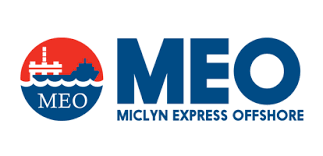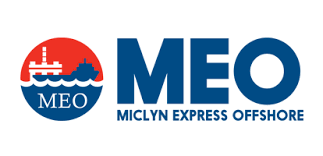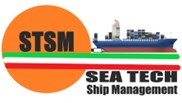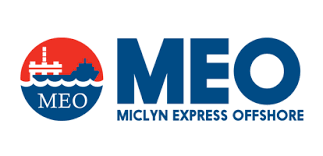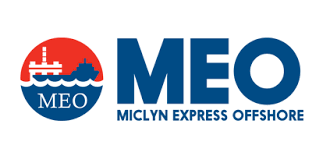Information
ISO 14001:2015 Internal Audit
-
Client / Site
-
Conducted on
-
Prepared by
-
Location
-
Personnel
-
Summary
4 Context of the organization
Introduction
-
Please complete all sections starting immediately below. This internal self-assessment will evaluate the compliance of your Environmental Management System with ISO 14001:2015. Remember to attach evidence to items where required, and to sign off and complete this assessment in the final section.
4.1 Understanding the organization and its context
-
Company determines the external and internal issues that affect the ability to the intended objectives.
4.2 Understanding the needs and expectations of interested parties
-
Determine relevant interested parties to EMS
-
The EMS scopes considers the following:
-
External and internal issues that are relevant to the organizations purpose and its ability to achieve intended outcomes
-
Compliance obligations
-
Organizational units, functions and physical boundaries
-
Activities, products and services
-
Authority and ability to exercise control and influence
-
Determine relevant needs and expectations of interested parties
-
Determine which of these needs and expectations become its compliance obligations
4.3 Determining the scope of the environmental management system
-
EMS scope is documented and available to interested parties
4.4 Environmental Management System
-
The manual is established and maintained based on the knowledge obtained from 4.1 and 4.2
5 Leadership
5.1 Leadership and commitment
-
Top management is identified
-
Top management demonstrates leadership and commitment
-
Taking accountability for EMS effectiveness
-
Ensure EMS policy and objectives are established and are compatible with strategic direction and context of organization
-
Ensures EMS is integrated into organization's business processes
-
Ensures resources are available
-
Communicates importance of effective EMS and of conforming to its requirements
-
Ensures intended outcomes
-
Directing and supporting persons to contribute to the effectiveness of the EMS
-
Promotes continuous improvement
-
Supports other relevant management roles to demonstrate their leadership as it applies to their areas of respsonsibility
5.2 Environmental policy
-
Establish, implement and maintain an EMS policy
-
Appropriate to the purpose and context of the organization, including the nature, scale and environmental impacts of its activities, products and services.
-
Provides a framework for setting environmental objectives
-
Includes a commitment to the protection of the environment, including the prevention of pollution and other specific commitment(s) relevant to the context of the organization
-
Includes a commitment to fulfill its compliance obligations
-
Includes a commitment to continual improvement of the EMS to enhance environmental performance
-
EMS Policy shall be maintained as documented information
-
EMS Policy shall be communicated within organization
-
EMS Policy is available to interested parties
5.3 Organizational roles, responsibilities and authorities
-
Responsibilities and authorities for relevant roles are assigned and communicated within the organization
-
Assign responsibility and authority to ensure EMS conforms to the ISO 14001:2015 standard
-
Assign responsibility and authority for reporting to top management the performance of the EMS, including environmental performance
6 Planning
6.1 Actions to address risks and opportunities
6.1.1 General
-
Determine if organization has established, implemented and maintains a process
-
Has the organization determined risks and opportunities related to its environmental aspects
-
Has the organization determined risks and opportunities related to its compliance obligations
-
Has the organization determined risks and opportunities related to other issues and requirements such as interested parties and their relevant needs and expectations and external and internal issues that are relevant to its purposes and its ability to achieve the intended outcomes of the EMS
-
Has the organization determined potential emergency situations, including those that can have an environmental impact
-
Verify documented information:
-
Risks and opportunities that need to be addressed
-
Processed needed in 6.1.1 to 6.1.4 to the extent necessary to have confidence they are carried out as planned
6.1.2 Environmental Aspects
-
Determine environmental aspects
-
Determine significant environmental aspects (threats or opportunities) using established criteria that have or can have significant environmental impact
-
Significant environmental aspects have been communicated among various organizational levels and functions, as appropriate
-
Verify documented information:
-
Environmental aspects and associated environmental impacts
-
Criteria used to determine its significant environment aspects
-
Significant environmental aspects
6.1.3 Compliance obligations
-
Determine and have access to the compliance obligations to the organization related to its environmental aspects
-
Determine how these compliance obligations apply to the organization
-
Take into account compliance obligations when establishing, implementing, maintaining and continually improving its EMS
-
Verify documented information
6.1.4 Planning action
-
Organization shall plan to take action to address its significant environmental aspects, compliance obligations and identified risks and opportunities
-
Organization shall plan how to integrate and implement the actions into its EMS processes and evaluate the effectiveness of these actions
-
Were the organizations technological, financial, operational and financial options/requirements considered
6.2 Environmental objectives and planning to achieve them
6.2.1 Environmental objectives
-
Environmental objectives determined at appropriate levels and take into account the organization's significant environmental aspects and associated compliance obligations
-
Environmental objectives shall be:
-
Consistent with the environmental policy
-
Measurable (if practicable)
-
Monitored
-
Communicated
-
Updated as appropriate
-
Verify documented information
6.2.2 Planning actions to achieve environmental objectives
-
Organization shall determine:
-
What will be done
-
What resources will be required
-
Who will be responsible
-
When it will be completed
-
How the results will be evaluated, including indicators for monitoring progress toward achievement of its measurable environmental objectives
-
Organization shall consider how actions to achieve its environmental objectives can be integrated into the organization's business processes
7 Support
7.1 Resources
-
Organization determined and provide needed resources
7.2 Competence
-
Organization shall determine necessary competence of person(s) doing work under its control that affects its environmental performance and its ability to fulfill its compliance obligations
-
Organization shall ensure that person(s) are competent on the basis of education, training or experience
-
Organization shall determine training needs associated with its environmental aspects and its EMS
-
Organization shall, where applicable, take actions necessary to acquire the necessary competence, and evaluate the effectiveness of the actions taken
-
Verify organization retains appropriate documented information as evidence of competence
7.3 Awareness
-
People doing work under the organization's control are aware of
-
the environmental policy
-
the significant environmental aspects and related actual or potential environmental impacts associated with their work
-
their contribution to the effectiveness of the EMS
-
the implications of not conforming with the EMS requirements, including not fulfilling the organization's compliance obligations
7.4 Communication
-
Verify internal and external communication process (what, when, with whom and how to communicate)
-
Verify how organization responds to relevant communications on its EMS
-
Verify retained documented information, as appropriate
7.5 Documented information
-
Verify documented information is identified and described
-
Verify appropriate format (i.e language, software version, graphics) and media (i.e. paper, electronic)
-
Verify documented information is reviewed and approved
-
Verify documented information is available, suitable for use and is adequately protected
-
Verify documented information's distribution, access, retrieval and use
-
Verify documented information's storage and preservation
-
Verify retention and disposition
-
Verify control of changes
-
Verify documented information of external origin is identified and controlled
8 Operation
8.1 Operational planning and control
-
Determine organization has established operating criteria for the process(es)
-
Determine process controls that have been implemented
-
Verify the organization controls planned changes and reviews the consequences of unintended changes, taking actions as needed
-
Verify outsourced processes are controlled or influenced
-
Verify controls are established in the design and development process
-
Verify the organization has determined its environmental requirement(s) for the procurement of products and services, as appropriate
-
Communicate its relevant environmental requirement(s) to external providers, including contractors
-
Verify the organization's consideration of the need to provide information about potential significant environmental impacts associated with the transportation or delivery, use, end-of-life treatment and final disposition of its products and services
-
Verify documented information
8.2 Emergency preparedness and response
-
Verify the organization has established, implemented and maintained a process(es) for potential emergency situations
-
Verify the organization
-
prepares to respond to prevent or mitigate adverse environmental impacts from emergency situations
-
responds to actual emergency situations
-
takes action to prevent or mitigate the consequences of emergency situations
-
periodically tests the planned response actions, where practicable
-
periodically reviews and revises the process(es) and planned response actions, in particular after the occurrence of an emergency situation or test
-
provided relevant information and training to relevant interested parties, including persons working under its control
-
Verify documented information
9 Performance evaluation
9.1 Monitoring, measurement, analysis and evaluation
-
Verify organization is monitoring, measuring, analyzing and evaluating its environmental performance
-
Verify that calibrated or verified monitoring and measurement equipment is used and maintained, as appropriate
-
Determine how the organization evaluates its environmental performance and the effectiveness of the EMS
-
Verify how the organization communicates relevant environmental performance information both internally and externally as identified by its communication process(es) and as required by its compliance obligations
-
Verify organization has established, implemented and maintains its process(es) needed to evaluate fulfilment of its compliance obligations
-
Verify organization has:
-
determined the frequency that compliance will be evaluated
-
evaluated compliance and take action if needed
-
maintained knowledge and understanding of its compliance status
-
Review retained appropriate documented information
9.2 Internal audit
-
Verify audits are conducted at planned intervals
-
Verify organization has established, implemented, and maintains an internal audit program
-
Verify the importance of the environmental process, changes affecting the organization and the results of previous audits are considered
-
Verify audit criteria and scope are created for each audit
-
Auditors are objective and impartial
-
Audit results reported to relevant management
-
Review retained documented information
9.3 Management review
-
Verify management reviews EMS at planned intervals
-
Verify management review includes:
-
status of actions from previous management reviews
-
changes in external and internal issues relevant to the EMS
-
changes in the needs and expectations of interested parties, including compliance obligations
-
changes in its significant environmental aspects
-
changes in risks and opportunities
-
the extent to which environmental objectives have been achieved
-
information on the organization's environmental performance, including trends in
-
nonconformities and corrective actions
-
monitoring and measurement results
-
fulfilment of its compliance obligations
-
audit results
-
adequacy of resources
-
relevant communication(s) from interested parties, including complaints
-
opportunities for continual improvement
-
Outputs of management review shall include:
-
conclusions on the continuing suitability, adequacy and effectiveness of the EMS
-
decisions related to continual improvement opportunities
-
decisions related to any need for changes to the EMS, including resources
-
actions, if needed, when environmental objectives have not been achieved
-
opportunities to improve integration of the EMS with other business processes, if needed
-
any implications for the strategic direction of the organization
-
Verify retained documented information
10 Improvement
10.1 General
10.2 Nonconformity and corrective action
-
Verify how organization reacts to nonconformity by evaluating actions taken to control and correct it and how the organization deals with the consequences
-
Determine what actions are taken to prevent nonconformity from recurring
-
Verify implemented actions and their effectiveness
-
Verify retained documented information that provides evidence of the nature of the nonconformity and any subsequent actions taken and the results of any corrective actions
10.3 Continual improvement
-
Verify how the organization continually improves
